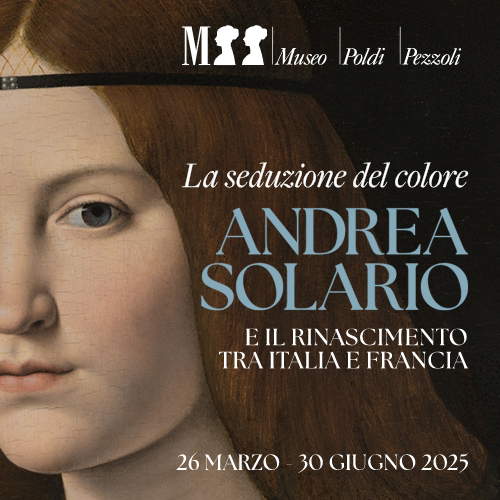A vase by Antonio Canova never before exhibited is on display in Padua
From Nov. 30, 2024 to March 9, 2025, the Diocesan Museum of Padua will host the exhibition Il Canova mai visto (Canova Never Seen), curated by Andrea Nante, Elena Catra and Vittorio Pajusco. The beating heart of the exhibition is the Vaso cinerario della contessa Lodovica von Callenberg( Cinerary Vase of Countess Lodovica von Callenberg), a work by Antonio Canova that is on public display for the first time. The marble vase, part of the heritage of the Church of Padua, was originally placed in the outdoor garden of the Church of the Eremitani. Made by Antonio Canova between 1803 and 1807, it was considered destroyed due to the bombing in March 1944 and was later found in the parish premises thanks to a search of the inventory of ecclesiastical cultural property. The Cinerary Vase was part of a funerary monument designed and built by architects Domenico Fadiga and Giannantonio Selva and consisted of a cippus supporting the sculptural work of Antonio Canova, on which stood an inscription by Johann Wolfgang von Goethe. To complete the monument, there was a stele with an epigraph written by Abbot Stefano Antonio Morcelli and seven candelabras, each with inscriptions dedicated to famous people. The Church of the Eremitani had also housed another work by Antonio Canova until 1896: the Funeral Stele of Prince William of Orange Nassau made between 1806 and 1808, of which a bronze copy still stands today.
In addition, an upcoming exhibition will present the connections between Padua and Antonio Canova, including prominent figures from the European aristocracy, artists and intellectuals. These include Swiss painter Angelica Kaufmann, author of a portrait of Canova preserved in a private collection in Padua. It will also be an opportunity to delve into the figure of German noblewoman Lodovica von Callenberg and her relationships with European intellectuals and artists, such as Johann Wolfgang von Goethe, and with the Italian and European aristocracy, including senator and prince Abbondio Rezzonico. A number of Canova plaster casts from the Possagno Gipsoteca will also be on display within the Il Canova mai visto exhibition. The exhibition will also include portraits of the protagonists involved in the creation of the work, unpublished views of the city of Padua showing the original location of the funeral monument, and a collection of period volumes that helped to pass on its fame.

A special section will be devoted to documents, letters and writings of Monsignor Giovanni Battista Sartori Canova, which testify to the prelate’s connection with his beloved seminary. Among the bequests that the prelate arranged, one tells of Sartori Canova’s numismatic passion: the collection of as many as 3,600 coins of ancient Rome, the result of “many years of care, I would say almost passionate care.” To be precise, the inventory mentions “3,593 pieces in silver and first and second bronze [...] and some Consular cotrons of No. 163 families [...] and those of the high Latin empire of 98 heads.” All these objects will be on public display for the first time and, thanks to the exhibition, will be part of a research project of the University of Padua. From the Antiquarian Library of the Episcopal Seminary of Padua, a group of engravings from the bequest of Marquis Federico Manfredini and numerous texts, including the latest volume of the History of Sculpture. Dal suo risorgimento all’epoca di Canova, compiled by Leopoldo Cicognara, who considered Antonio Canova the highest expression of sculpture.
“With such a legacy he intended me, Monsignor,” wrote Giovanni Battista Sartori Canova to the then Bishop of Padua Modesto Farina, “not only to give a sign of grateful remembrance to the place in which I had my literary and ecclesiastical education and was assumed to the priesthood, but also well to supply a need of this institute too in truth poorly provided for the instruction of the young in the science of numismatics.”
“The exhibition,” comments one of the curators and director of the Diocesan Museum, Andrea Nante, “is an interesting opportunity to discover some previously unpublished evidence about Antonio Canova - novello Fidia as his contemporaries called him - but also to grasp the close ties with the city and with some of the most illustrious personalities of the time, intellectuals, artists, nobles, and clergymen. It will also be interesting to better delineate the figure of Lodovica von Callenberg, whose profile is being studied by some researchers, who is known to have been an esteemed musician as well as a noblewoman whose friendships included those with Goethe and Angelika Kauffmann, and with some European royal families. This initiative is part of the cultural project of the Diocesan Museum marked for more than two decades by an activity of knowledge, recovery and enhancement of the cultural heritage of the area, conducted in close synergy with research and preservation bodies and institutes.”
 |
| A vase by Antonio Canova never before exhibited is on display in Padua |
Warning: the translation into English of the original Italian article was created using automatic tools. We undertake to review all articles, but we do not guarantee the total absence of inaccuracies in the translation due to the program. You can find the original by clicking on the ITA button. If you find any mistake,please contact us.



























